Natural disasters that shook the world in 2020
Around 207 natural disasters were recorded globally during the year

2020 has been a standout year for all the wrong reasons - from the deadly coronavirus, to largest forest fires and locust swarms.
At least 207 natural disasters were recorded globally during the year. Extreme weather conditions have increased dramatically over the past years, leading to one severe disaster after the other.
Here is a timeline of all the natural disasters that hit the world in 2020

Australia bush fire 2019-2020
While most countries were celebrating the New Year, Australia was facing one of its biggest natural disasters. The bush fire that started in December 2019 raged on till at least March 2020. The bushfire burnt more than 46 million acres, resulting in animal and human habitats being lost. Several endangered species faced the risk of total extinction. More than a third of the Koala bear population in the forest was killed in the bushfire.
In January, a wave of heavy rainfall brought some relief in the intensity of fire in some areas that helped the firefighters in conducting rescue operations. However, in the start of February, hotter weather escalated the crisis again. In March, heavy rainfall helped firefighters take control of the fire again, finally bringing Australia’s most devastating bushfire to an end.
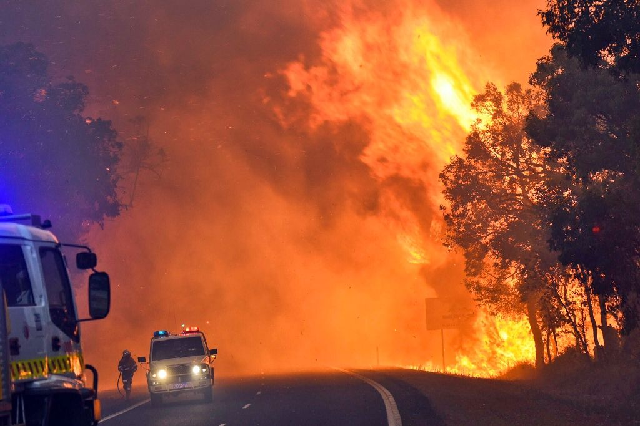
PHOTO:REUTERS
Coronavirus
In December 2019, the first case of the deadly coronavirus was identified in Wuhan, China. No one could imagine the impact the virus wreak have globally. China recorded its first Covid-19 death in January, 2020 and in March, 2020 World Health Organization (WHO) declared coronavirus a pandemic.
Most of the countries around the world went into a state of complete lockdown to contain the spread of this highly contagious virus. The lockdown inevitably took a huge toll on economies around the globe.
With the year almost coming to an end, the world desperately awaited a cure. It was only on December 2 that Britain became the world’s first country to approve the Pfizer-BioNTech Covid-19 vaccine. And thus, began a series of inoculation processes in several countries, restoring some hope against the deadly virus.
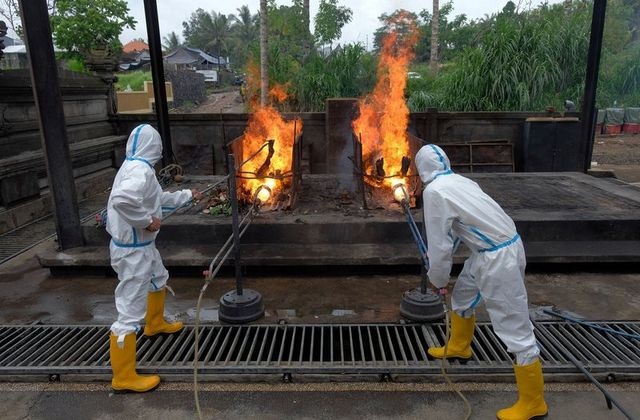
Officials wearing personal protective equipments (PPE) set fires to bodies of people who died due to the coronavirus disease (Covid-19) at a crematorium in Bangli, Bali, Indonesia October 10, 2020. PHOTO: REUTERS
Locust swarms in Asia, East Africa and India
Another nightmare that 2020 would be remembered for is the locust swarms that affected dozens of countries, especially in Asia, Africa and some parts of India.
This year's locust swarms were one of the worst pest attacks in almost 26 years. The sudden increase of locusts occurred due to a change in the climatic conditions. The increase in temperature was cited as a reason paving way for increased breeding.
Locusts are notorious for eating up a crop within seconds. Farmers around the world faced difficulty as the pests destroyed all their seasonal crops. The swarm attacks were said to have taken a toll on the mental health of the farmers, as the crops are their primary source of income.
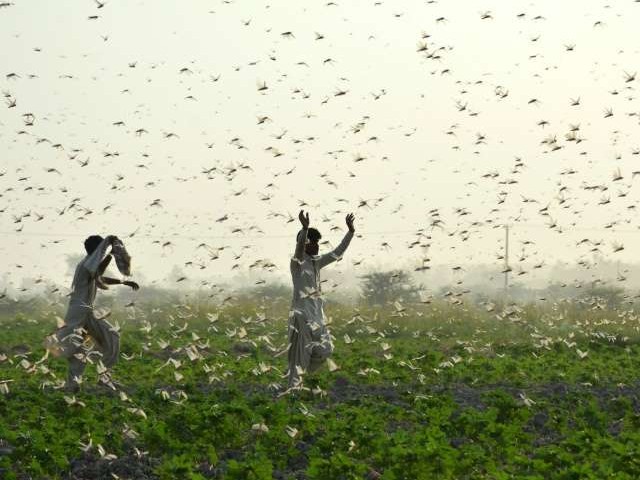
Record numbers of locusts have descended in devastating swarms across parts of Africa and Asia this year. PHOTO: AFP/FILE
Philipines volcano eruption
Taal volcano is considered to be the second most active volcano that erupted in Philippines, sending a thick column of ash dust over 100km away. Thousands of people were evacuated from the surroundings areas as seismologist warned of the possibility of further hazardous eruptions.
The National Disaster Risk Reduction and Management Council (NDRRMC) and the Philippine Institute of Volcanology and Seismology (PHIVOLCS) reported a total of 2,484 volcano-tectonic earthquakes in the vicinity of the volcano.
The volcano has affected thousands of families and caused millions worth of damage. The volcano was caused due to a steam-driven or phreatic eruption which happens when water beneath the ground or on the surface gets in contact with hot magma.
1608409947-0/download-(1)1608409947-0.jpg)
PHOTO: REUTERS
Flood in Indonesia
In January 2020, overnight heavy rain caused rivers to overflow resulting in the devastating flash floods that covered Jakarta and its neighboring areas entirely. Over four million people were forced to flee from their homes.
Several locals became victims to drowning or landslides, while others died of electric shocks. About 66 people lost their lives in this natural disaster.
Seasonal downpours cause dozens of landslides and flash floods each year in Indonesia, a sprawling archipelago of 17,000 islands where millions of people live in mountainous areas or near fertile plains.
1608410718-0/download-(2)1608410718-0.jpg)
Earthquake
Around 45 major earthquakes took place in 2020 around the world, affecting thousands of people. Turkey was hit by a 6.6-7.0 earthquake that primarily damaged its city of Izmir. It was followed by over 1,400 aftershocks with 43 of them being over a magnitude of 4.0, geologists expect these aftershocks to continue for several weeks.
More than 100 people died ,while over 1,000 sustained injuries; hundreds were also left homeless.
In Russia, an earthquake of 6.2 magnitude struck Kamchatka peninsula at a depth of 320 km. No casualties were reported but 400 residents had to be moved to a higher ground.
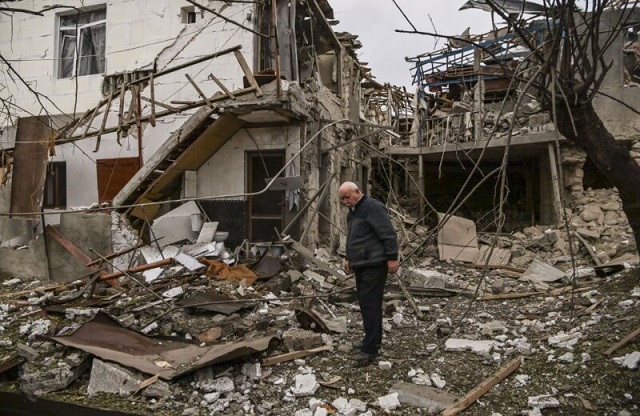
PHOTO: REUTERS
Cyclone Amphan in India and Bangladesh
Cyclone Amphan was one of the most powerful and deadly cyclones to have hit Bangladesh and India in 2020. It wreaked havoc in West Bengal and left trails of destruction. It was termed an extremely severe cyclonic storm that made landfall in both the states with abundant rains and lightening, destroying everything that came in its way.
Nearly three million people were evacuated - most from Bangladesh. The pandemic and social distancing measures made mass evacuations more difficult, The authorities were unable to use the shelter properly because of Covid-19
The two countries lost at least 102 people in the cyclone. More than 13 million people were affected as some lost houses, some crops and land.
1608413894-0/download-(3)1608413894-0.jpg)
PHOTO: REUTERS
When snow turned green in Antarctica
The most unique natural disaster of the year was the now in Antarctica turning green. The phenomenon occurred owing to climate change as snow algae tend to thrive on temperatures that are above freezing temperatures. As the climate change has caused the snow to melt, it has accelerated the speed at which the snow algae grow.
Warming temperatures and melting snow in the continent are helping in the formation of algal blooms which are expanding at a high rate, thereby turning many areas ‘green’. In fact, the phenomenon is becoming so prolific in some places that it is even visible from space.
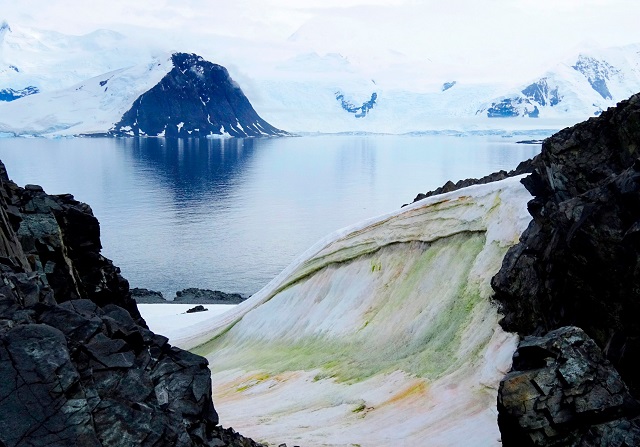
PHOTO: REUTERS



















COMMENTS
Comments are moderated and generally will be posted if they are on-topic and not abusive.
For more information, please see our Comments FAQ